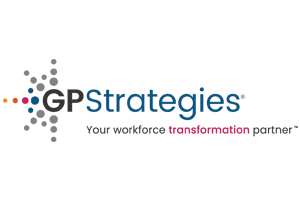In today’s business landscape, data is the lifeblood of a company. Leveraging data to conduct a comprehensive workforce analysis can provide employers with powerful, actionable insights to help them optimize their operations. Understanding data points such as turnover rate, profit per employee and general demographics can be beneficial for making critical business decisions.
A workforce analysis can also improve your approach to employee training. A detailed analysis can identify skills gaps on your team and if you have someone who can potentially be trained to fill those gaps. If you’re interested in creating a reskilling or upskilling program — the process of training workers so that they can fill more advanced roles in an organization — a workforce analysis can be a great starting point.
What Is a Workforce Analysis?
A workforce analysis is a process where the company (or an outside firm) collects information about the workforce and analyzes it. The company can do this through surveys, interviews or audits. The analysis can be localized to a particular department, or it could be a companywide review.
The data from the analysis can then be used to determine if the company’s labor supply is adequate. It can also let you know if you have enough people trained to operate a specific type of equipment.
Why Is a Workforce Analysis Important?
Every company has goals and objectives it’s trying to achieve. A workforce analysis essentially gathers data to help the company make better decisions to reach those goals. The data collected by a workforce analysis can have long-lasting effects according to Forbes, so it’s important to execute them properly.
These effects may impact your training or upskilling strategies. For example, your analysis may identify that your company only has a few experienced technicians, but also less experienced workers who are eager to learn. You could focus your resources on training these workers to become techs to build an internal talent pipeline.
For long-term planning, your analysis may find that before you invest in new automated machinery you need to hire people who have previous experience or workers you believe can be trained to manage the new technology. This is especially important in a tight labor market when skilled labor is hard to attract and retain.
How to Conduct a Workforce Analysis
A workforce analysis can be completed by an organization’s human resources (HR) or learning and development (L&D) department as well as outsourced to a third-party vendor. As an L&D leader, it’s essential to understand the steps to conducting a workforce analysis for your company. This can help you identify your current workforce capabilities and determine what to do to prepare it for future business needs. This not only can help set you apart as a business partner, but earn you a seat at the table. Let’s review the steps:
1. Supply analysis.
According to the National Institute of Health (NIH), a supply analysis helps companies understand their current workforce and how it may change over time. Activities may include cataloging the total number of employees, demographics, skill sets, promotions and more. This analysis can be used to make future projections regarding who you train and when.
2. Demand analysis.
A demand analysis or demand model can help you forecast your company’s future workforce composition. The demand analysis projects the future needs of a company by focusing on the expectations of your employees, new projects, products or services, market conditions, upcoming regulations, new responsibilities and more. This analysis can be used to project potential upswings in demand on your staff and respond with staffing changes.
3. Gap analysis.
SHRM suggests conducting a gap analysis to identify discrepancies between the supply and demand of your workforce. The results differ based on your company’s needs and values. You may need another installer, or you may have too many assemblers or not enough heating, ventilation, air conditioning (HVAC) technicians. The data gleaned from this exercise may have immediate impacts on your overall recruitment goals and strategy.
Conducting a workforce analysis takes time and preparation, but the results can lead to long-term benefits to your training strategies. It can aid learning leaders in workforce planning and future-proofing their workforce to ensure their people will have the skills and capabilities needed to function — now and in the future.

